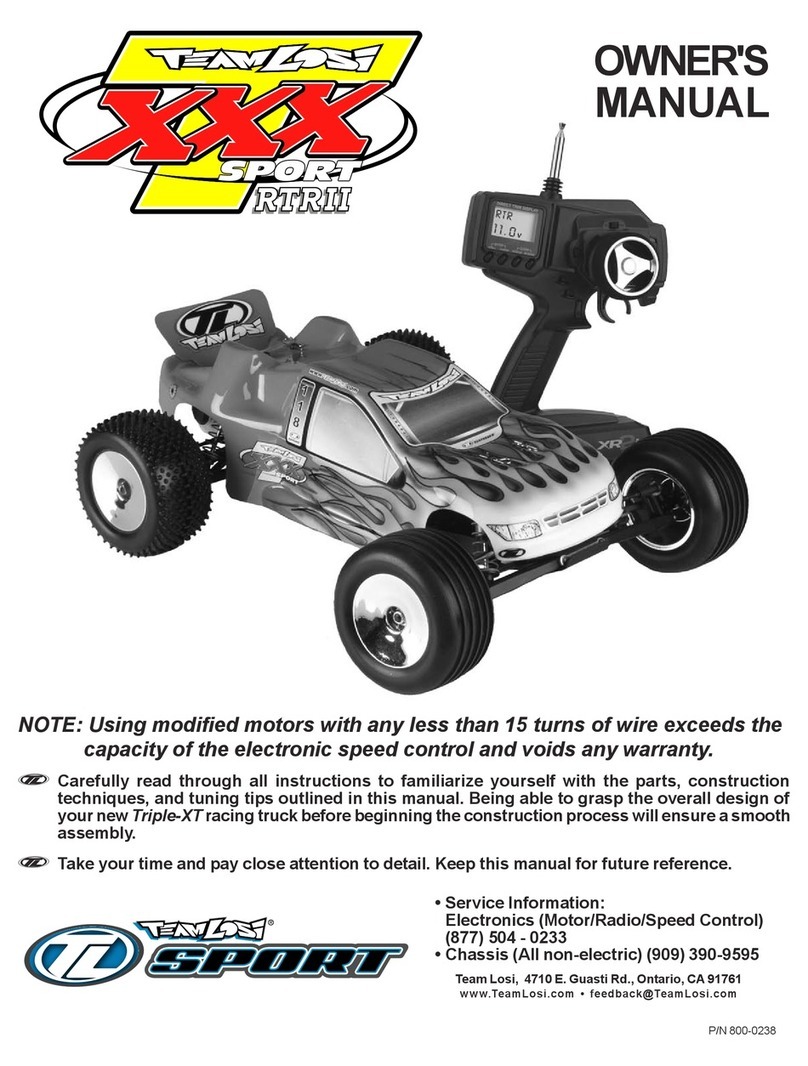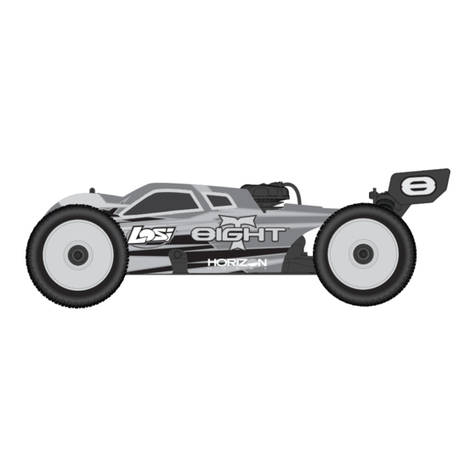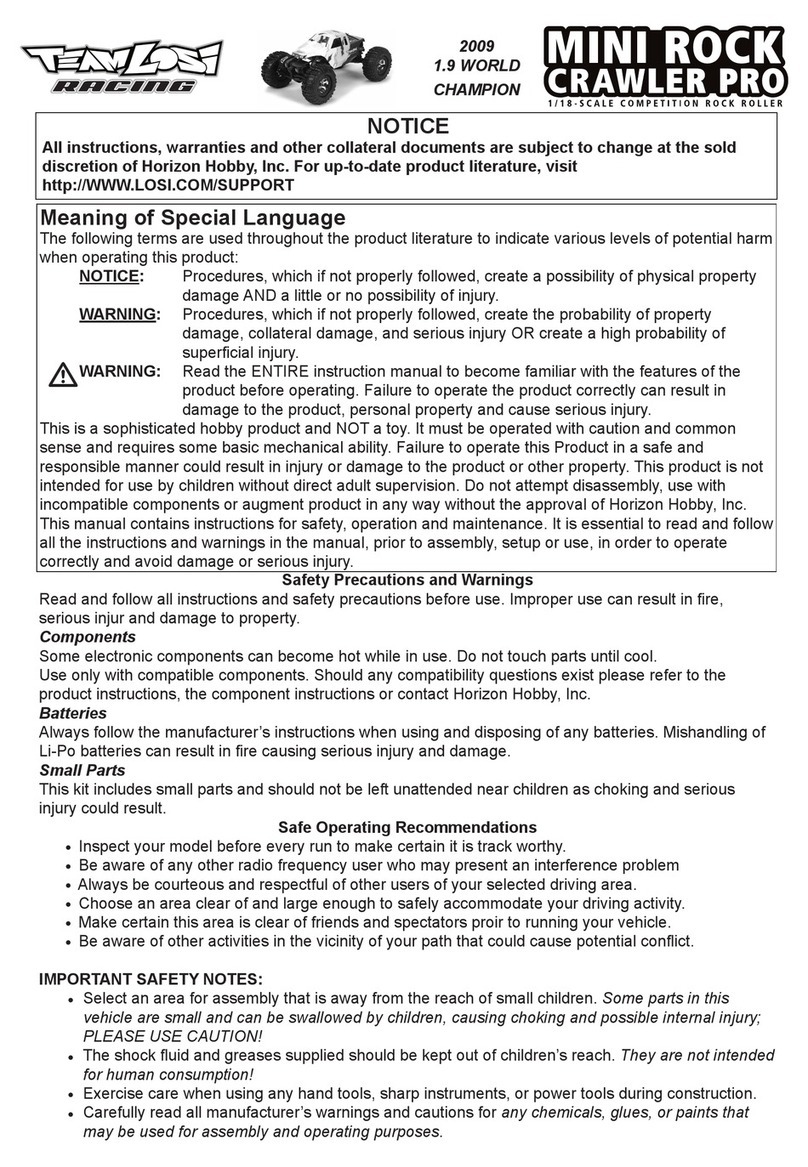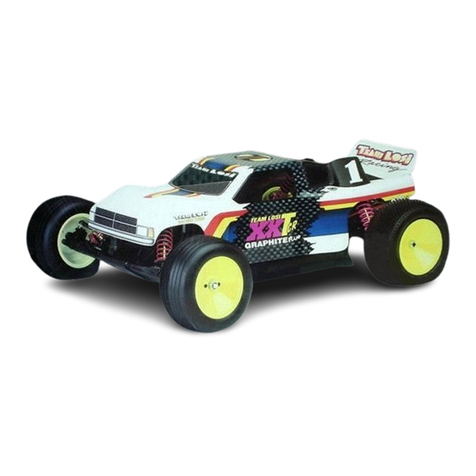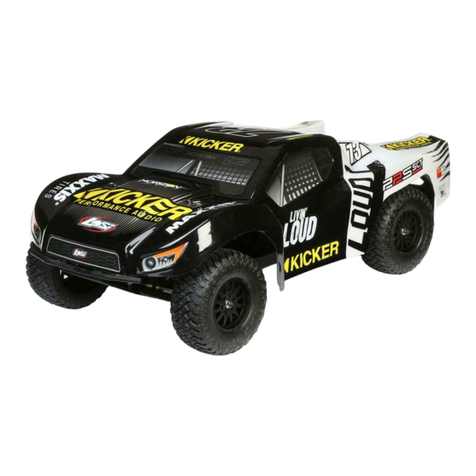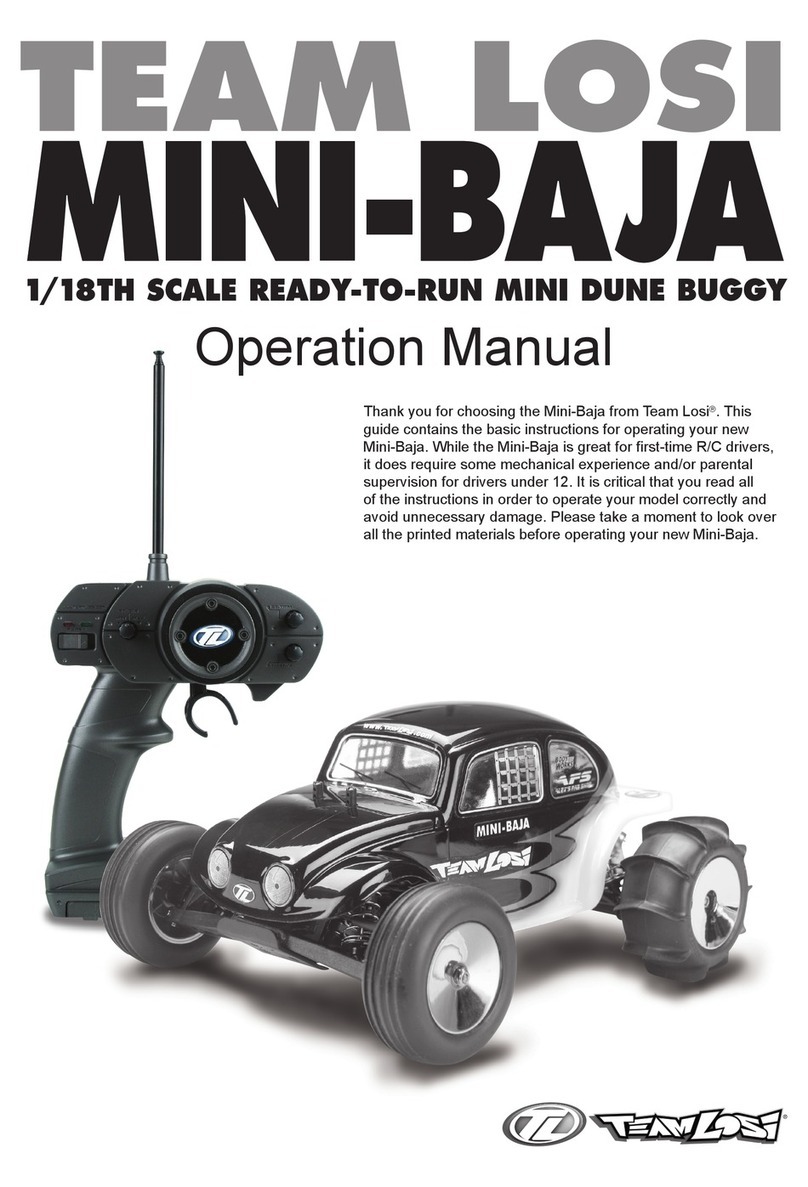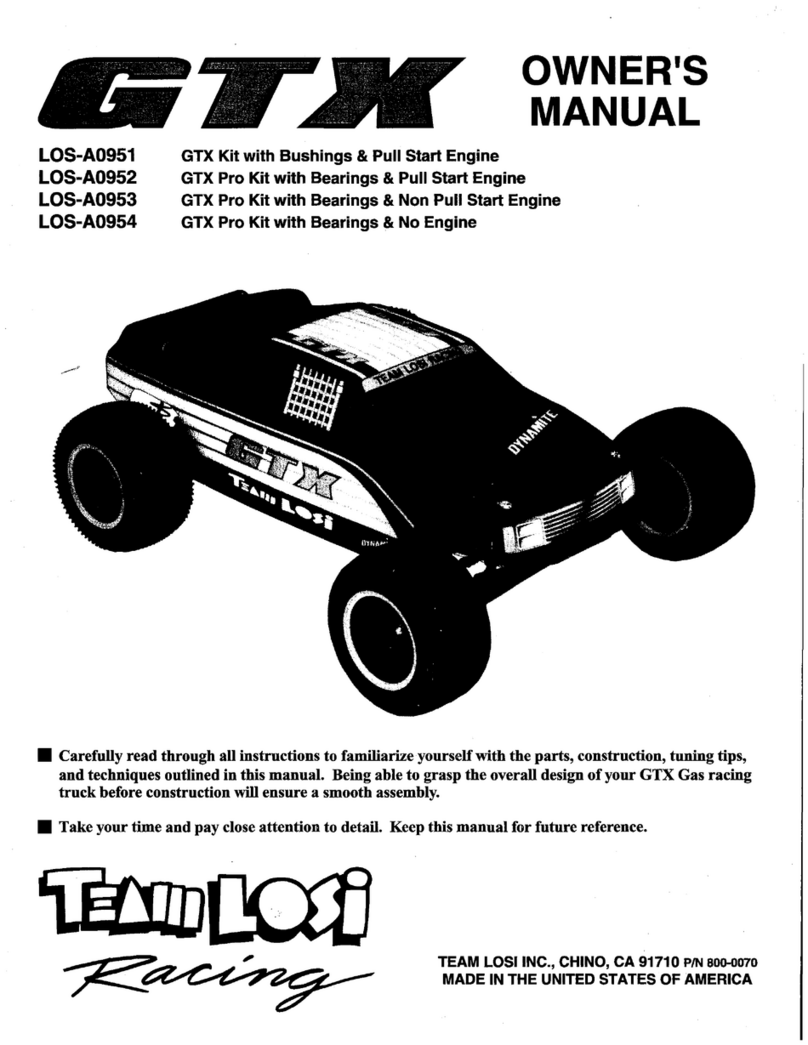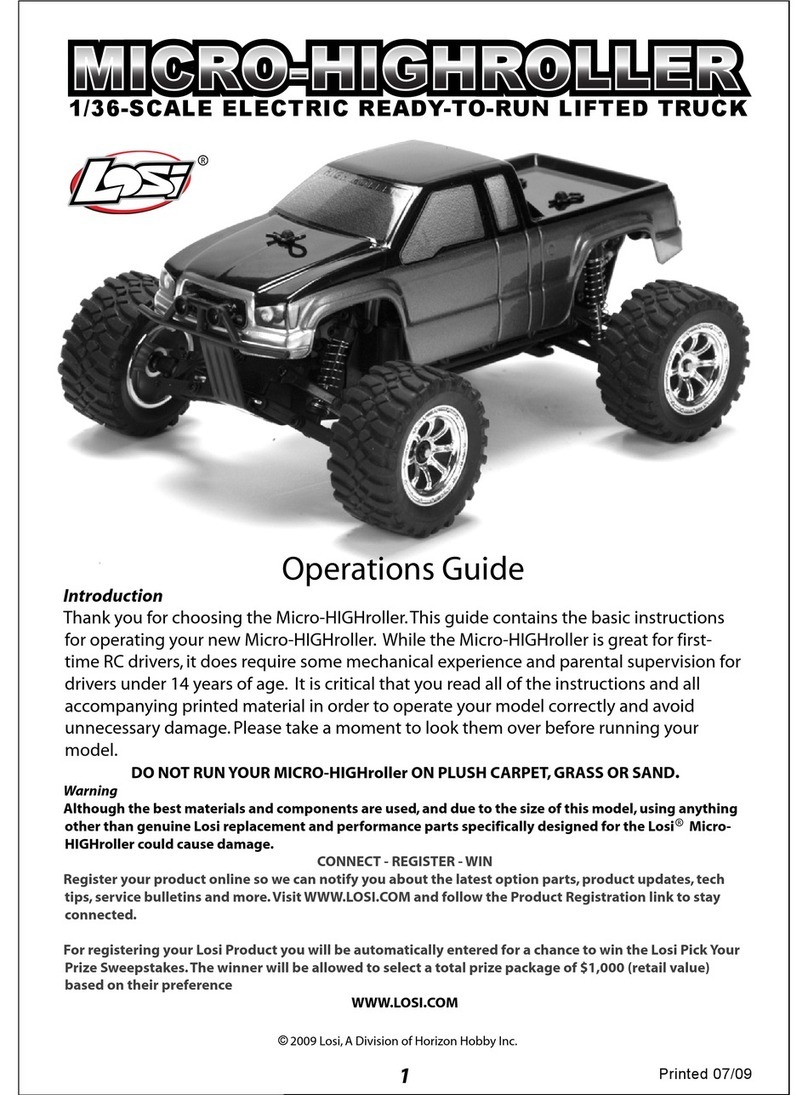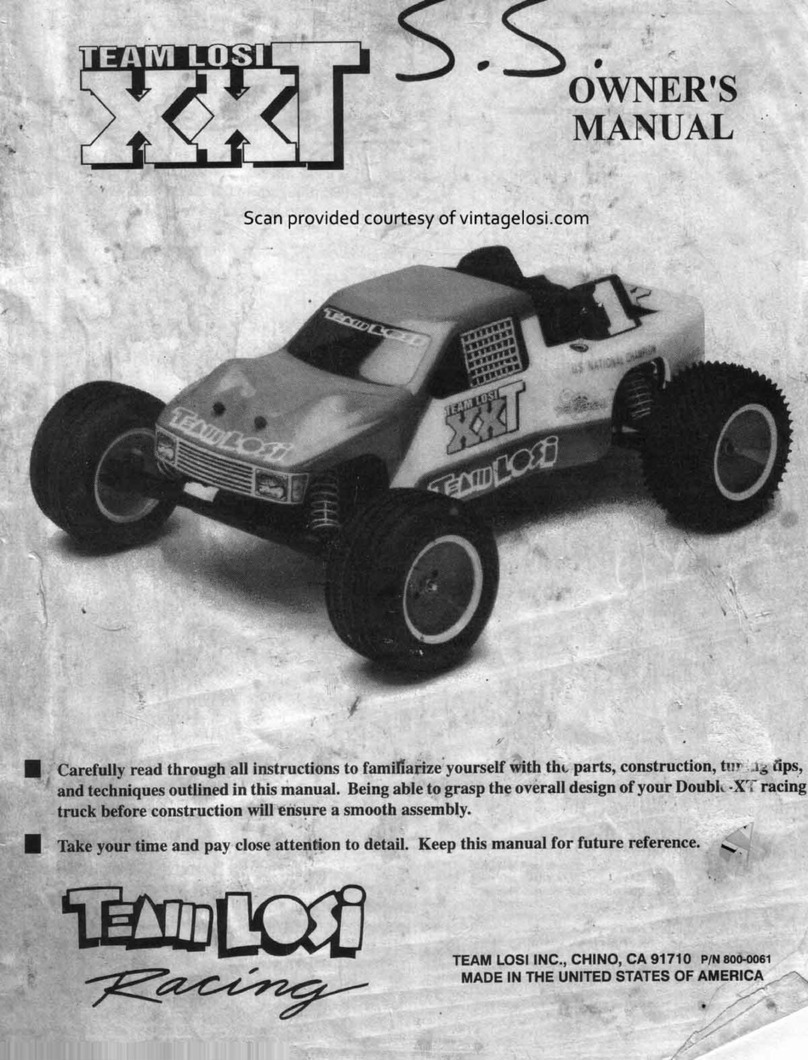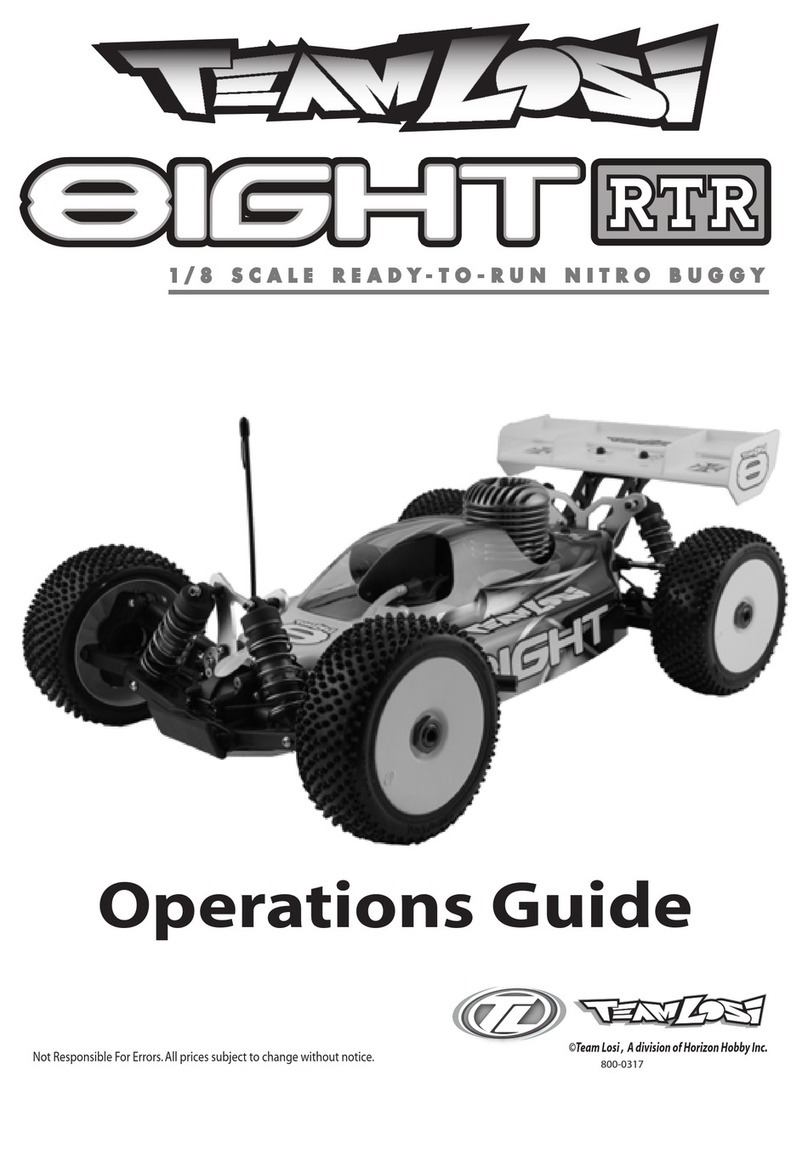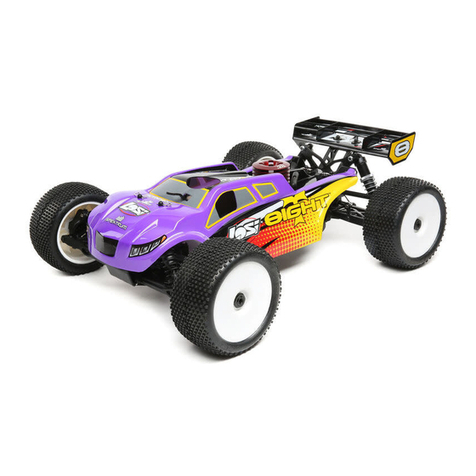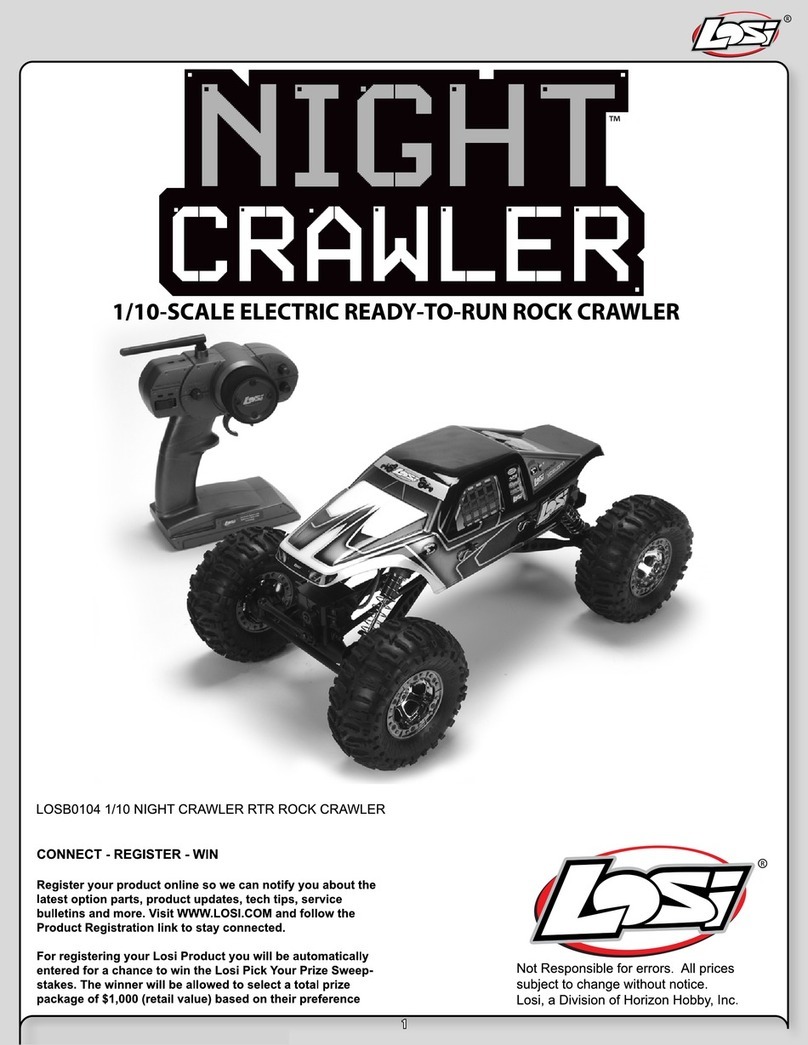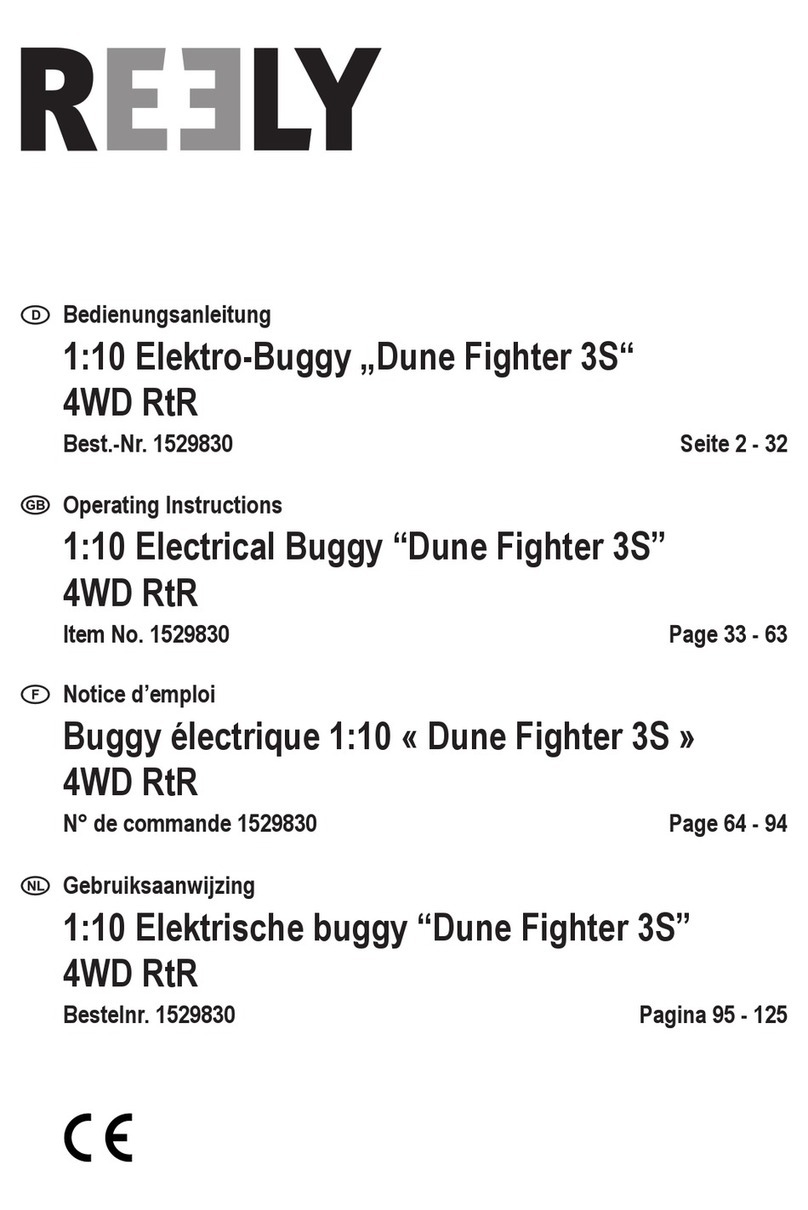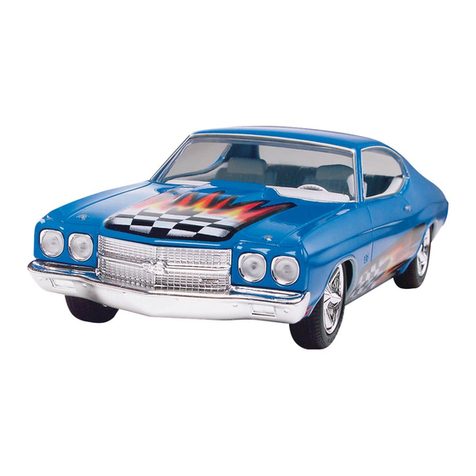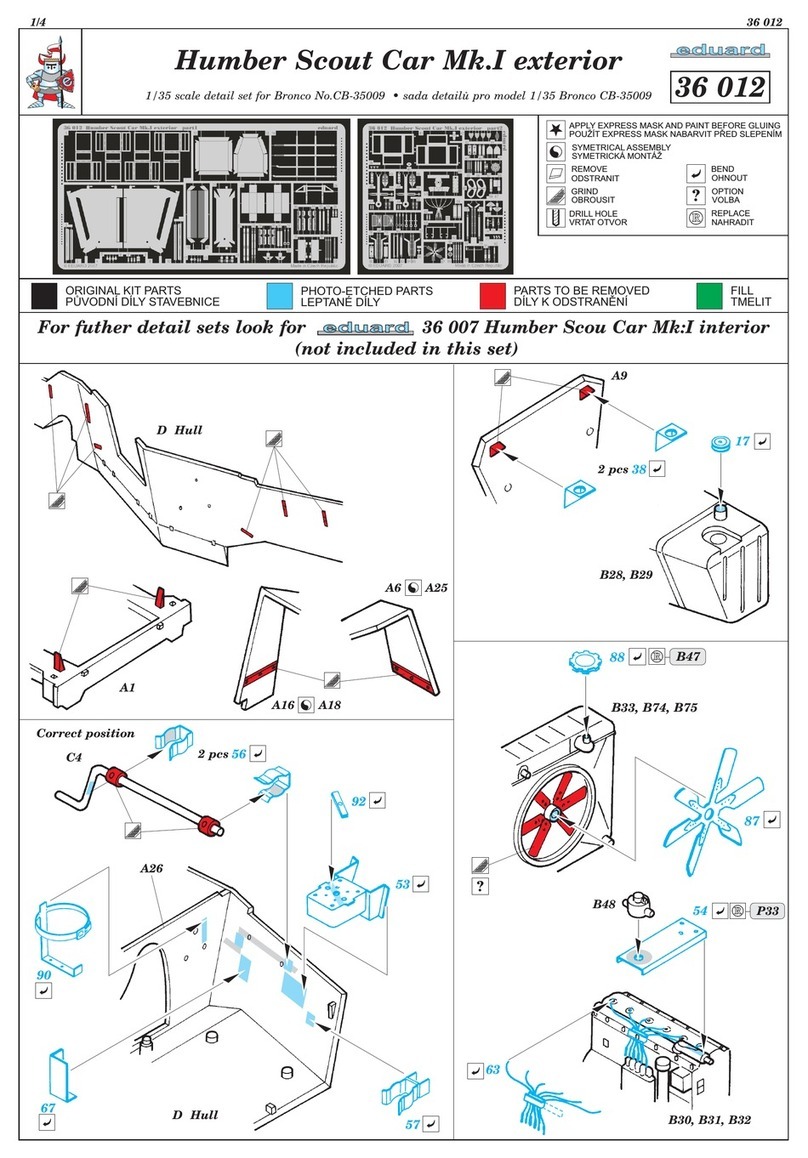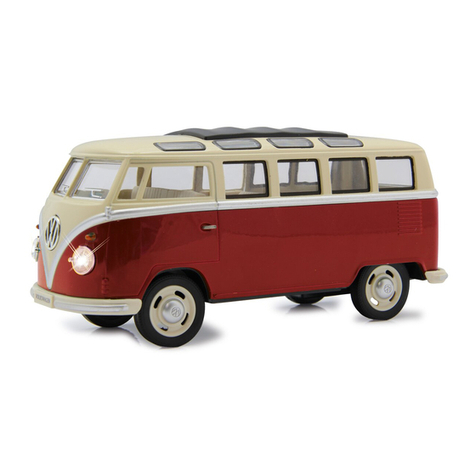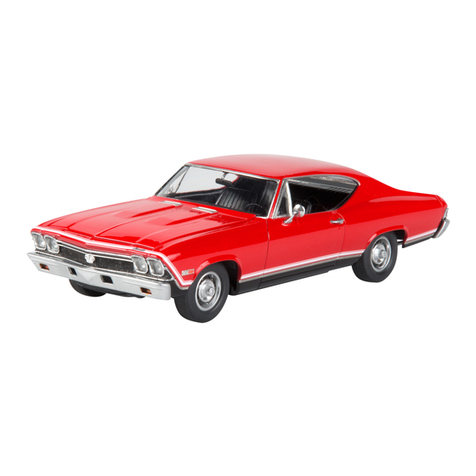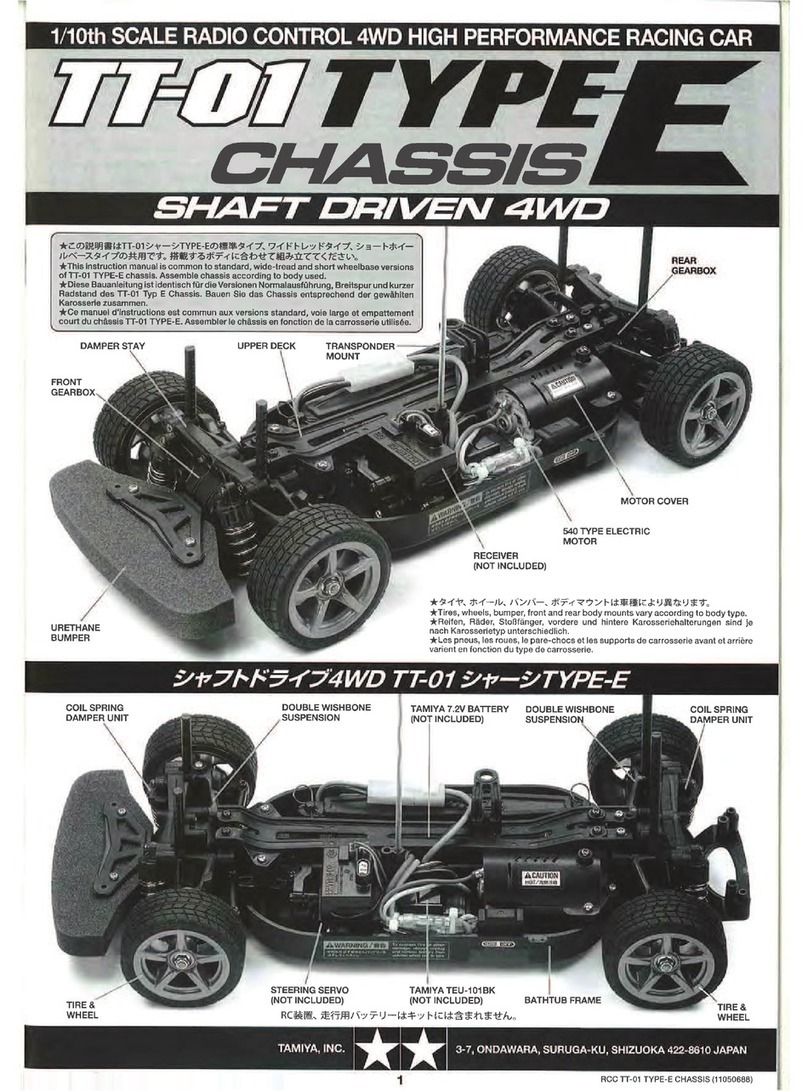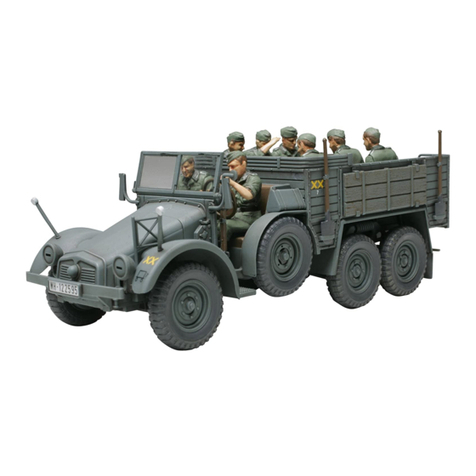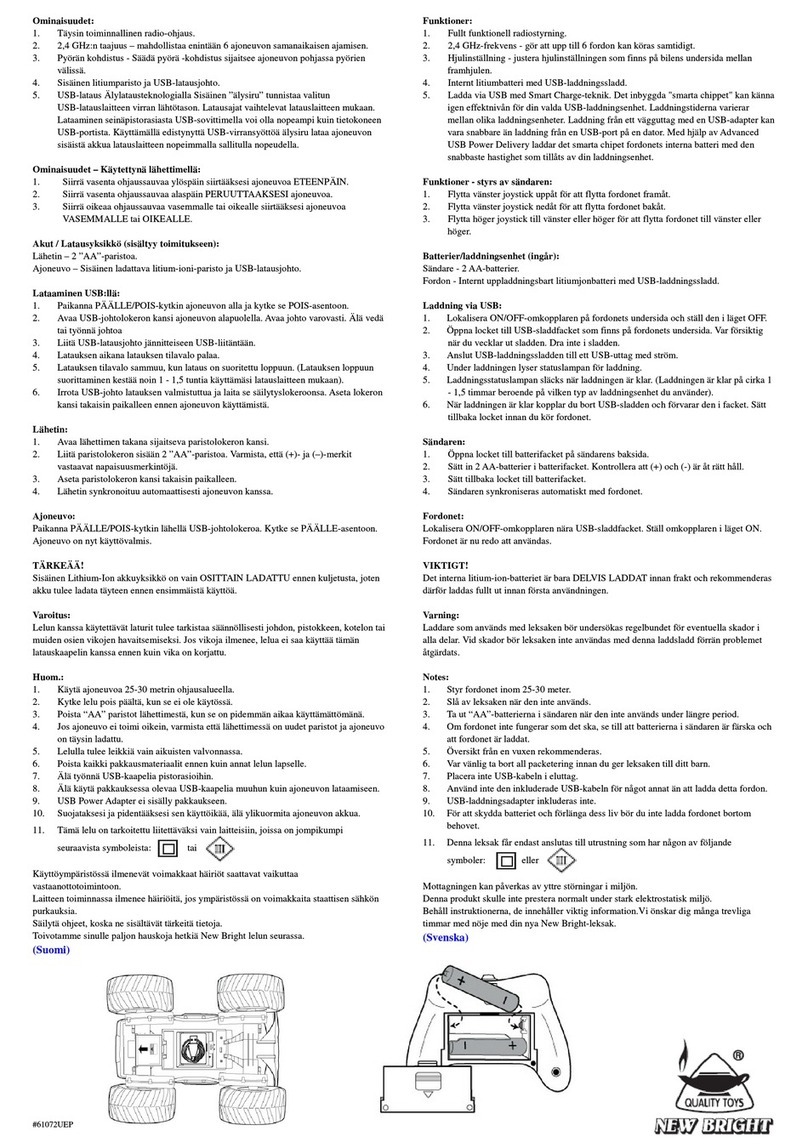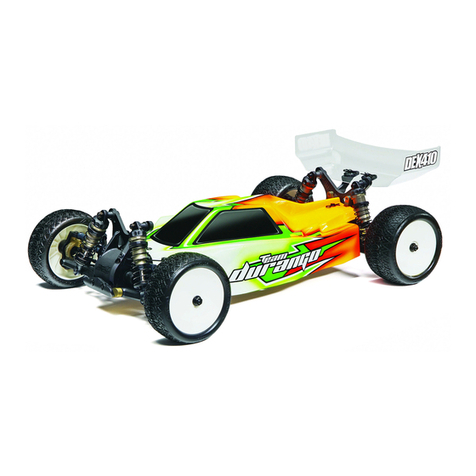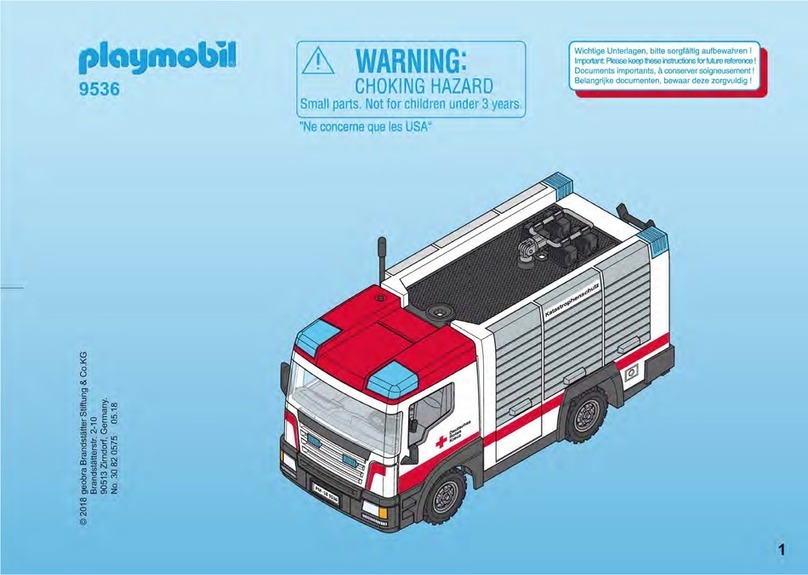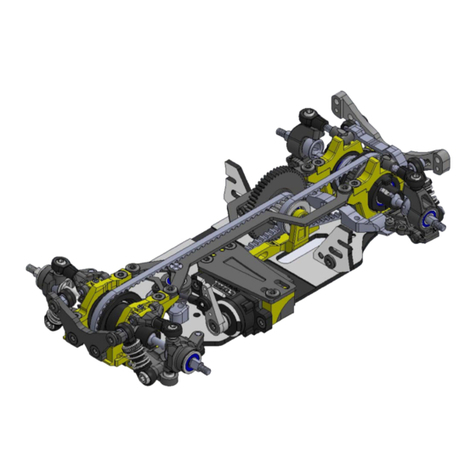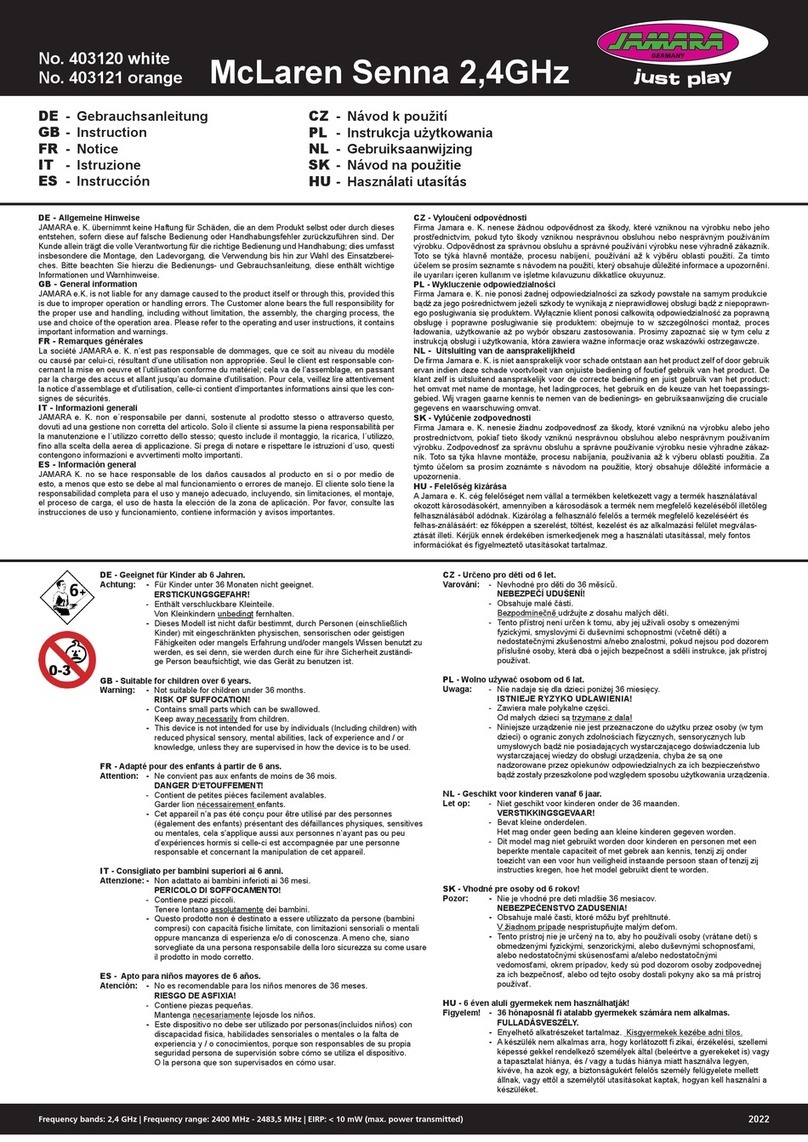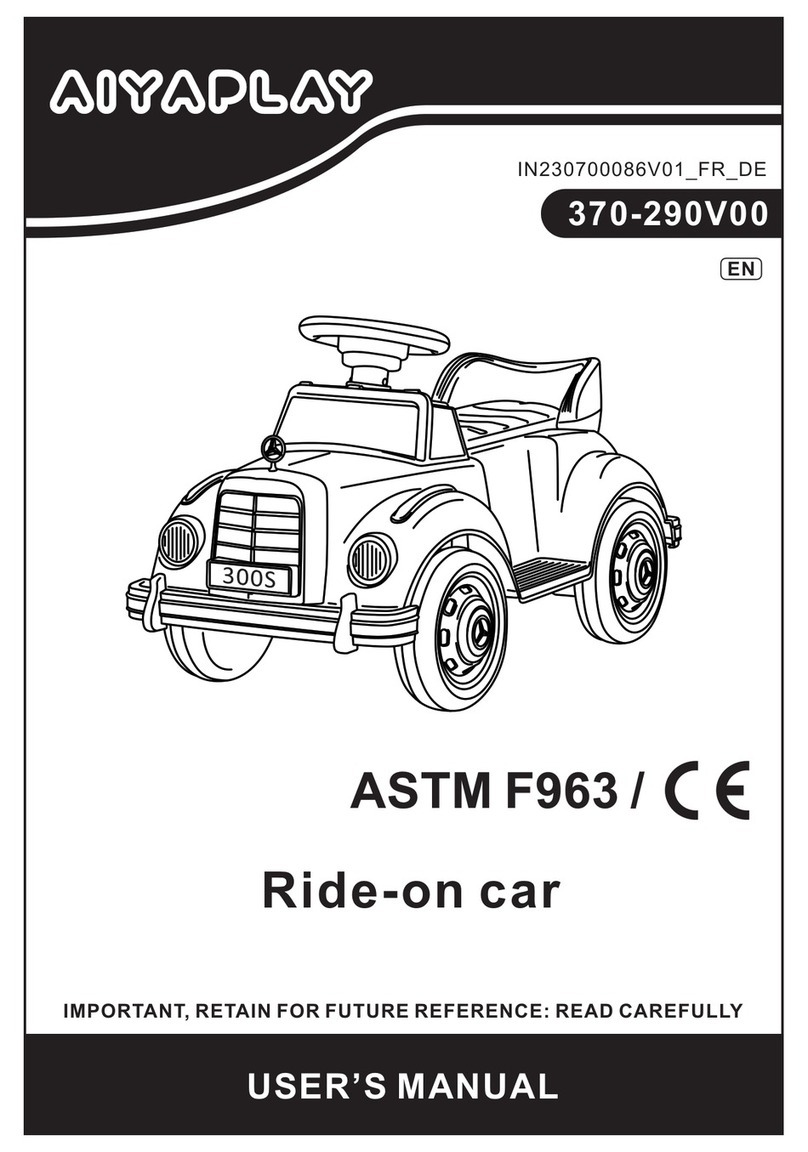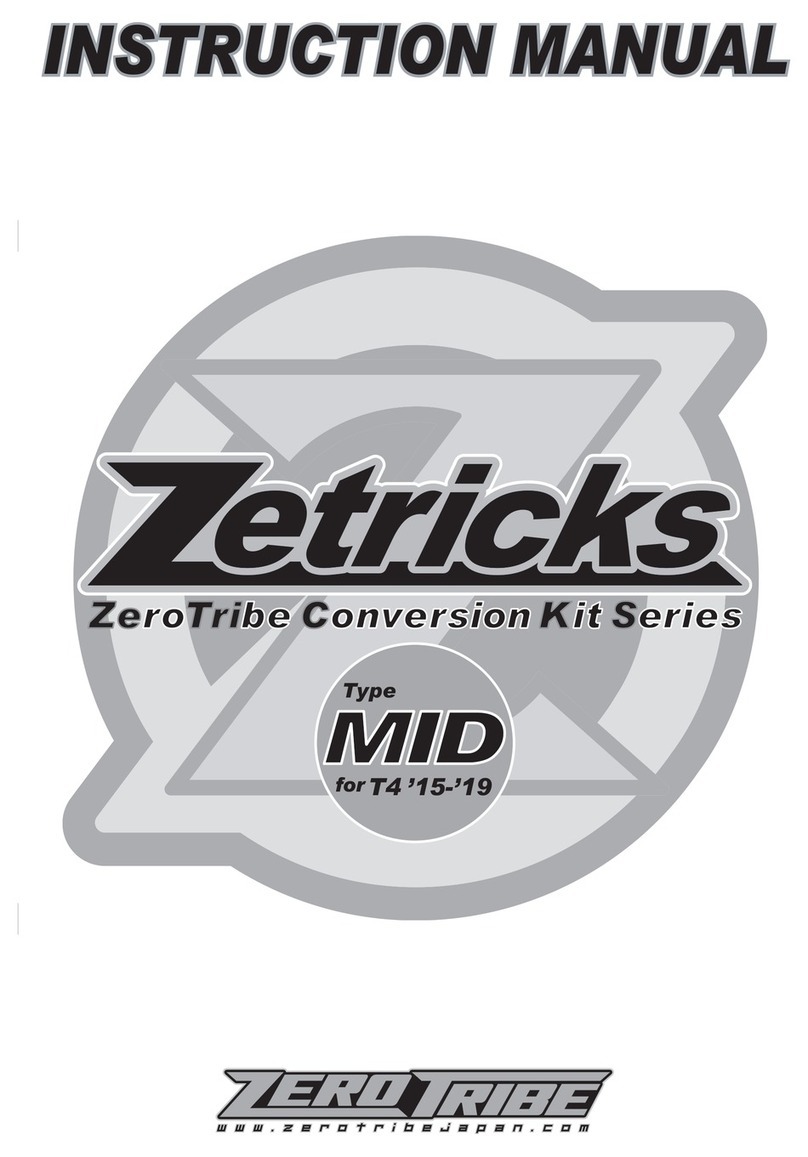Changing the Pinion Gear/Gear Ratio
Before you change the pinion gear ask yourself why you are doing it. In general, if you change to a larger pinion the
top speed will improve but you will see less acceleration and run time. This would only be advisable for really long
track layouts with few tight turns. Changing to a smaller pinion will give you quicker acceleration and possibly a bit
longer run time but a little less top speed. This would be good for short layouts or when running hotter motors. The
pinion on the Mini-Slider offers the best balance of both. To change the pinion, remove the gear cover, loosen the
motor screws, and slide the motor back. Use a pair of small needle-nose pliers between the motor plate and back of
the pinion to push the pinion off. Place the new pinion on the end of the motor shaft and, using the at of the pliers or
a similar at tool, push it on to the same position as the one removed. See Setting the Gear Mesh below.
Warning: When running aftermarket motors, check with the motor manufacturer for correct gearing. Never over-gear
the motor as it can cause overheating, damaging it and the speed control.
Setting the Gear Mesh
The motor screws should be slightly loose. Slide the motor forward allowing the pinion gear
to mesh with the spur gear. Snug (not tight) the bottom motor screw and try rocking the spur
back and forth. There is a slight bit of movement before the motor is forced to turn over. If not,
pull the top of the motor back slightly and recheck. If there is too much slop between the gears,
push the top of the motor forward. When set properly the wheels can be spun forward freely
with very little noise. Make sure to tighten both motor screws and replace the gear cover before
running.
Steering Servo Installation/Removal
Unplug the servo lead from the receiver. Remove the four small screws that
secure the servo mount/chassis brace to the chassis. Use a screwdriver or small
pliers to pop the steering link off of the servo, so it can be removed. There is no
need to remove the servo mounts on either side as all service can be done with
them on. Replace in the reverse sequence used to remove it.
Receiver/Speed Control (ESC) Installation/Removal
Unplug the power lead, motor leads and steering servo. Do not attempt to open the receiver or electronic speed
control (ESC) as only a factory technician has the proper tools and parts to make any repairs necessary. The
receiver and ESC are mounted with double-sided foam tape. Use your thumb and index nger at the bottom of the
front corners to pull them from the mount. If this is difcult, ask for help. If necessary, carefully use a large at blade
screwdriver between the unit and the mount to pry it loose. Make sure you remove any left over foam or adhesive
before remounting with common servo tape or hobby type foam tape.
Reassembly
Replace the idler gear and shaft into the center of the same right side of the gearbox. Replace any shims removed
from the right bevel gear and slide it through the lower bearing. Replace any shims that came off of the left side bevel
gear and allow it to slide through the lower bearing as you put the left gear box half back into position. Replace the
screws and reinstall the rebuilt gearbox using the steps in reverse order that were used to remove it.
Changing the Spur Gear
Remove the gear cover by removing the three small screws. If you are replacing the spur gear with one of a different
size (number of teeth), you must rst loosen (do not remove) the two screws that secure the motor and slide it back
slightly. Remove the mm nut at the end of the slipper shaft and all of the slipper parts on the outside of the spur gear
as well as the old gear. Place the new spur gear into position and replace the slipper parts. If you have changed the
size of the spur, see Setting the Gear Mesh below. After you have changed the spur gear, you will have to adjust the
slipper as described elsewhere.
Step 3
Remove the top E-clip from the
shock shaft. Remove the shock
piston. Remove second E-clip.
Remove the old cartridge.
Put a drop of oil on the shock
shaft before installing a new shock
cartridge.
Step 1
After removing the shock,
push up on the lower spring
cup and remove it from the
shaft. Remove the spring and
preload spacers.
Step 2
Turn the shock upside down
and remove the black shock
cartridge/shaft assembly
from the shock body by
turning it counterclockwise.
Note: If you only wish to
change or ll the shock uid,
skip to step 5.
Step 4
Reinstall the lower E-clip.
Slide the shock piston onto
the shock shaft against the
E-clip. Reinstall the top E-clip.
Step 7
Turn the shock over and use
a #0 Phillips screwdriver to
remove the small bleed screw
at the top of the shock. Slowly
push the shock shaft up until it
stops. Excess uid should ow
out of the bleed hole. Slowly
pull the shock shaft halfway
back and replace the bleed
screw. Use pliers to tighten
the cartridge, being careful not
to strip the plastics lobes on
the cartridge.
Step 5
If you plan on completely
changing the shock uid
(suggested), dump out the
old uid from the shock body.
Carefully ll the shock body
with uid to the bottom of the
threads inside the shock body.
Note: Your Mini-Slider comes
with 100wt shock uid from
the factory.
Step 6
Pull the shaft out so the
piston is next to the
cartridge and reinstall the
assembly into the shock
body, turn in a clockwise
direction until snug—DO NOT
TIGHTEN yet!
Step 8
Replace the spring and
spring cup and test the shock
action for smoothness and
leaks. Retighten the bleed
screw or cartridge if either
leaks. Remount the shock on
your truck.
** Production shock parts may differ from those shown in above drawings.
Servo Removal
Remove these 4 screws
Rebuilding/Relling the Shocks
Rebuilding/Relling the Shocks


